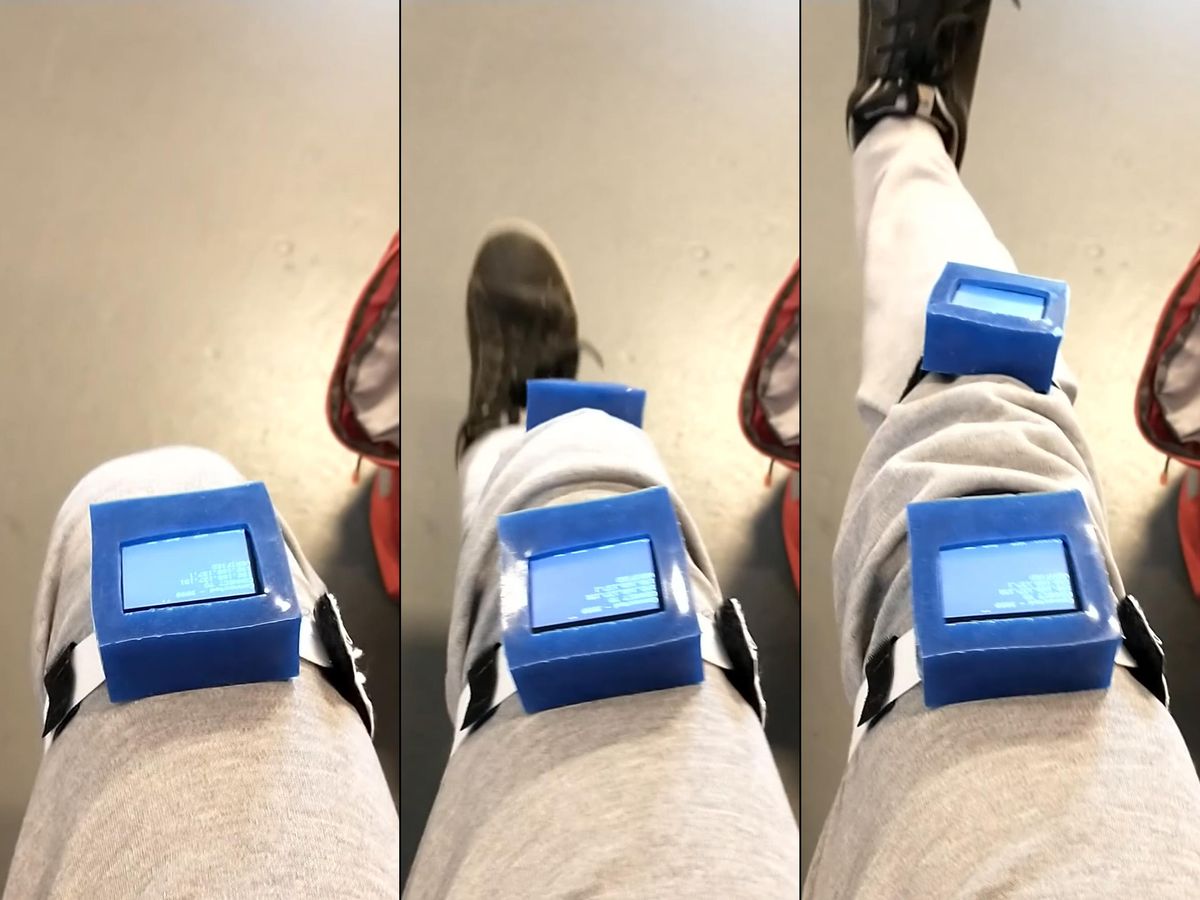Stroke and other serious brain-related injuries can often require a long road to recovery, with countless hours of rehabilitation to regain motor function and other abilities. Various research groups have been exploring ways to make the rehabilitation process more efficient and engaging by providing auditory feedback to patients as they move, indicating—quite literally—whether the movement was a step in the right direction.
More recently, a group of researchers in Denmark has taken this auditory feedback approach one step further, with a new system that uses synthesized music to guide patients through their rehabilitation exercises. The new musical biofeedback system—and the results of pilot tests of the system with volunteers who have experienced stroke—is described in a study published 10 January in IEEE Transactions on Human-Machine Systems.
Whereas simple sound effects may be fatiguing and lack meaning, musical feedback is a way to enrich the rehabilitation experience and tap into humans’ natural affinity for moving to the beat.
Prithvi Ravi Kantan is a Ph.D. student with the Department of Architecture, Design, and Media Technology at Aalborg University Copenhagen who helped design and test the new system. The project is a result of his own experience with both music and rehabilitation.
He has been heavily involved in music performance and production over the past 15 years and was working full-time in audio signal processing in Mumbai when his father suddenly contracted viral encephalitis. The infection left his father paralyzed on one side, and Kantan witnessed first-hand the lengthy rehabilitation process.
“Given the impact that this had on me and my family, it was a revelation when I discovered music therapy, as it gave me a way to channel my professional skills towards a cause that held some personal meaning to me,” Kantan explains.
When he arrived at Aalborg University Copenhagen in 2018, he began working on the new musical biofeedback system with colleagues. It involves wireless motion sensors that are strapped to the patients’ ankles, back, or both, which monitor their movements. A software program then synthesizes music to match the patients’ movements, as they go through different physical rehabilitation activities (for example, walking, balancing, or transitioning between sitting and standing positions).
The system offers different musical-feedback training modes. For example, one method is when the body itself creates music. In this scenario, no sounds are made if the person is still. But if they move a foot forward, a musical tune is synthesized; the tone becomes louder as the foot moves forward faster.
Here’s an example with guitar strings that play as the user extends the leg from bent to straight. A bell rings if the user overextends the knee:
Knee - Guitar Mapping Metaphorsyoutu.be
In another training mode, music is continuously played, and the tone or pitch changes as the person moves the limb:
Joint Angle Musical Biofeedbackwww.youtube.com
Lastly, the researchers developed a training mode that provides negative feedback if a person does a movement in a way that deviates substantially from the goal. For example, the music may become more dissonant if the person slumps forward too much:
Static Sitting - Posture Sonification - Inharmonicitywww.youtube.com
After developing the different training modes, Kantan and his colleagues tested the new musical biofeedback system with six study participants (four men and two women) who were recovering from stroke and had weakness on one side of the body. As well, several clinicians and musical therapists observed the rehabilitation sessions and were surveyed on the feasibility of the system.
The results showed that, in general, the musical cues were an effective means for conveying information related to movement–many of the volunteers were able to respond well to the musical cues and adjust their movements as needed. Two of the volunteers increased their pace significantly as the training progressed.
There were several challenges with the approach, however. For example, one volunteer had trouble hearing the musical cues, and sometimes the dynamic and layered sounds of the music were difficult for the volunteers to decipher.
“Patients need to be at a cognitive level where they can understand the feedback and act upon it,” says Kantan, noting that it’s easy for neurologically impaired people to get overstimulated by complex sounds. As well, the training mode that involves negative feedback was discouraging for some of the volunteers.
The clinicians and musical-therapy experts involved in the study noted that the suitability of the approach might depend on the severity and location of the user’s brain injury. For example, they recommended that stroke patients with cerebellar or lower brain-stem strokes may be better candidates for musical biofeedback therapy.
Although the results identified some limitations, the data suggest that musical biofeedback therapy is a feasible approach to rehabilitation and could open new avenues to recovery for people with brain injuries.
Notably, Kantan’s team designed its musical biofeedback system using a low-cost motion-sensing system and open-source tools, making it an easy tool to replicate and implement broadly. Their aim, Kantan says, is to accelerate the development and adoption of music-based feedback tools in rehabilitative practice.
“It would be extremely rewarding to contribute directly or indirectly to improving rehabilitation outcomes for patients,” says Kantan. “Although there is a lot of research to do before we see the widespread adoption of musical feedback in clinical practice, we at Aalborg University are determined to bring present efforts in the field to fruition in the coming years.”
Michelle Hampson is a freelance writer based in Halifax. She frequently contributes to Spectrum's Journal Watch coverage, which highlights newsworthy studies published in IEEE journals.



